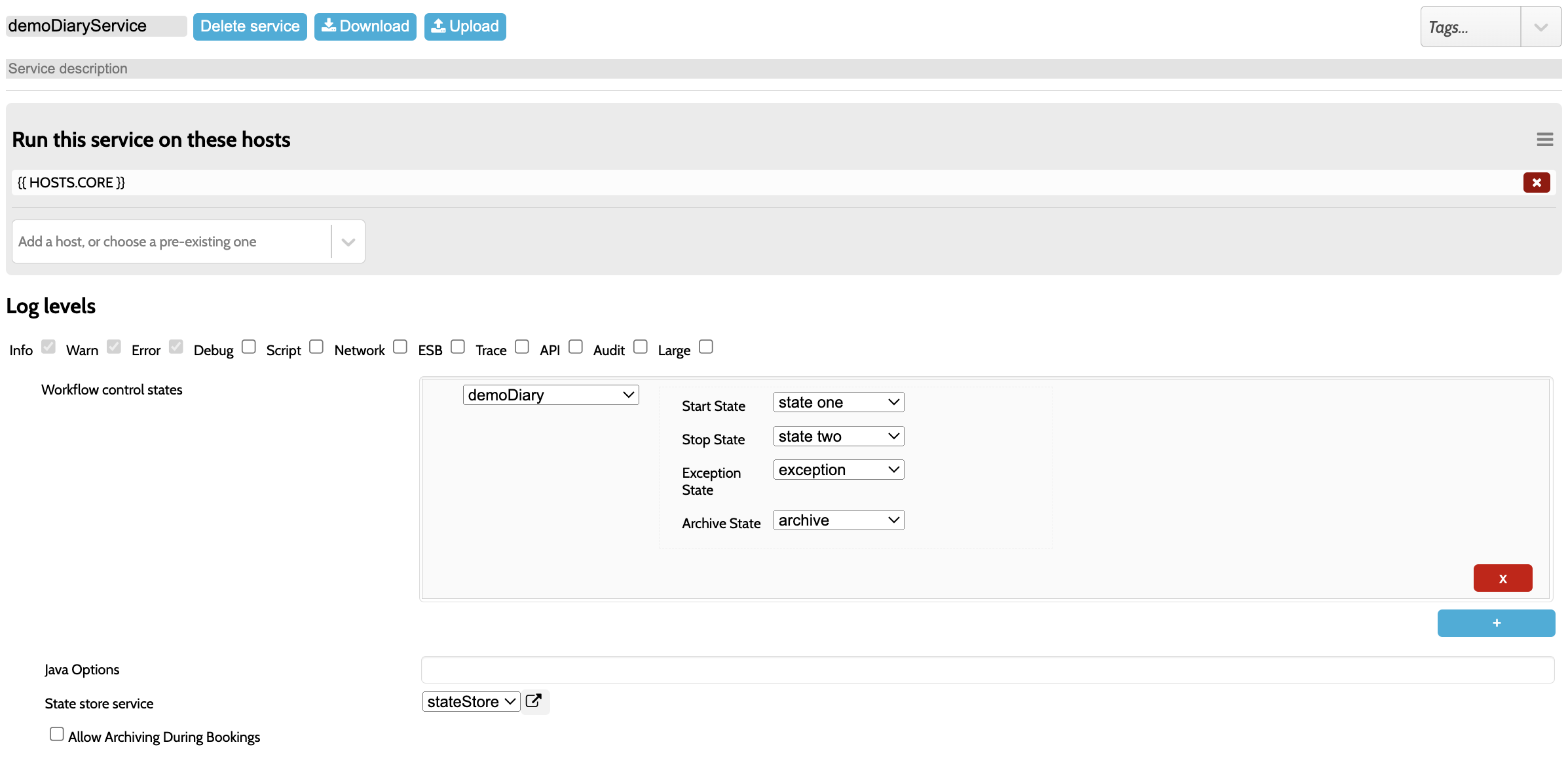¶ Overview
The Diary Service within our software enables the execution of jobs in a calendar. It distinguishes itself by its unique approach, wherein it requires a workflow and associated states to function effectively. This distinctive feature ensures that the Diary Service can manage jobs accurately, determining the current state of a job and guiding its progression through various states.

To optimize the functionality of the Diary Service, it is imperative that the states in the workflow are interconnected. This connectivity is essential to facilitate the seamless movement of jobs through different states, aligning with the configured settings of the Diary Service. For instance, jobs progress from the waiting state to the Start state state one and later from state one to state two.

However, it is crucial to understand that the Diary Service may encounter issues if jobs cannot transition smoothly from one state to another. The image below illustrates a scenario where the Diary Service moves a job from the waiting state to the state one as a Start Step. Still, it fails to execute the Stop state in state one due to the connection to the middle state instead of state two.

In summary, the Diary Service's effectiveness relies on a well-defined workflow, where states are logically connected to ensure the proper execution and progression of jobs through various states. Understanding these configurations is essential for maximizing the utility of the Diary Service within our software.